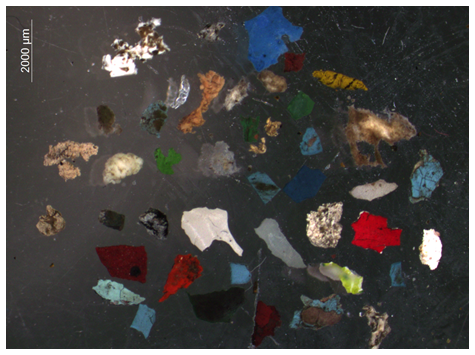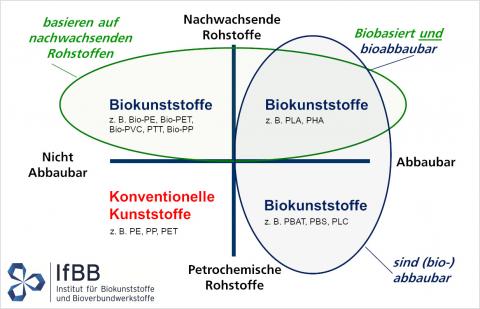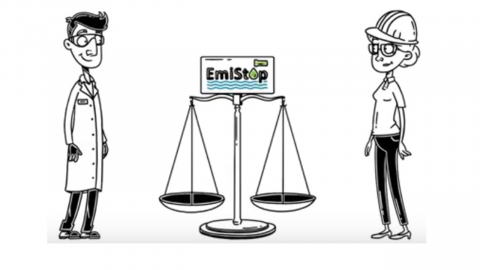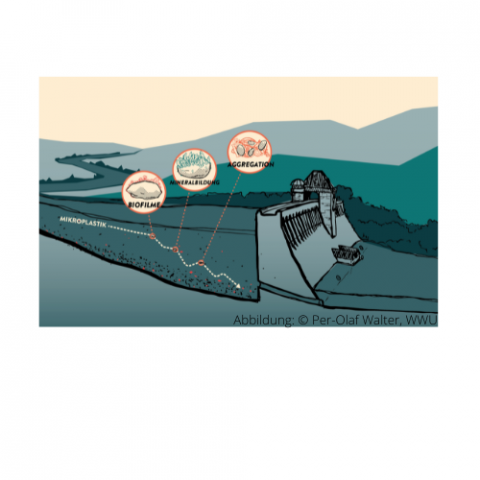Results
For quality assurance of ecotoxicological studies with microplastics, minimum reporting requirements should be followed. This poster is a guideline for the use of these criteria.
Unlike conventional plastics, many bioplastics are biodegradable. This means that there are microorganisms such as bacteria and fungi that can absorb and metabolize these bioplastics as a source of energy.
Plastics can be discharged into the environment through industrial wastewater. To prevent this, special processes for the separation of plastics have been developed that can be integrated into industrial wastewater treatment plants.
In addition to research on the current topic of microplastics, the dissemination of knowledge to the public is an important matter. Within the framework of the project, we have succeeded in developing teaching materials with which the examination of the topic can be realised from the 1st to the 12th grade.
This status report was prepared within the framework of the cross-cutting topic 1 "Analytics and reference materials" of the research focus. It summarizes the contents of the project discussions and coordination within the cross-cutting issue. The organization of this ongoing process of development or elaboration has been supported by several events.
Outdoor and sports clothing consists mainly of polyester. During household washing, fibre fragments with a size of < 5 mm are released. Although up to 95 % of these are retained in local wastewater treatment plants, relevant quantities reach surface waters via wastewater, where they can accumulate (Zhang et al 2021). Textile properties and washing parameters influence this release.
Microplastics in the environment are a much discussed topic. Our clothing also contributes significantly to this problem, as it is estimated that about 20 to 35 percent of the total microplastic input is due to fibre abrasion from textiles. During every washing process, tiny particles are released from synthetic clothing, which can enter the environment via wastewater.
It is not easy to determine how much microplastic is contained in wastewater and sewage sludge. In addition to plastic, countless other particles and substances are present. To reliably determine the concentration of microplastic particles, complex procedures for sampling as well as for removal of foreign substances and analysis of the microplastic particles are required.
Representative sampling is crucial to obtain scientifically usable data on microplastic levels in the environment. This requires an approximate idea of the microplastic occurrence in the medium under investigation. For water bodies, this can be done, for example, by individual sampling using a flow-through centrifuge.
The use of plastics permeates all areas of human life. Accordingly, microplastics are also produced in a variety of ways and are transported away via wastewater systems. However, little is known about which microplastic types and size distributions are found in the various wastewater streams, how well sewage treatment plants retain these loads and what ends up in water bodies.
Consumers are often unaware that millions of tonnes of plastic are improperly released into the environment. This can happen not only through improper disposal, but also through microplastic release from tyres or textiles. In the environment, the plastic breaks down into smaller and smaller pieces through exposure to sun or water and is dispersed by water or wind.
"To assess the ecologic danger posed by microplastics, one must also consider indirect effects in the food web", say Sebastian Höss (Ecossa) and Marie-Theres Rauchschwalbe (Bielefeld University). The researchers from the joint project MikroPlaTaS looked at these effects using nematodes as an example.
Plastic is now ubiquitous not only in the sea but also in many inland waters. In certain areas, such as at barrages or in dams, the flow velocity decreases. As a result, the particles previously held in suspension by the current begin to sink to the bottom of the water and can then accumulate in the sediment.
Microplastics can enter our wastewater along the entire value chain. Removal options exist primarily in wastewater treatment plants, here in the form of filtration, flotation and sedimentation processes. The removal performance of wastewater treatment plants determines how much microplastic is discharged into the environment.
The German Packaging Act calls for a significant increase in recycling rates for plastics. In order to be able to produce high-quality recyclates, plastic articles must be separated by type. However, there is currently a lack of satisfactory identification options for the many different plastics.











